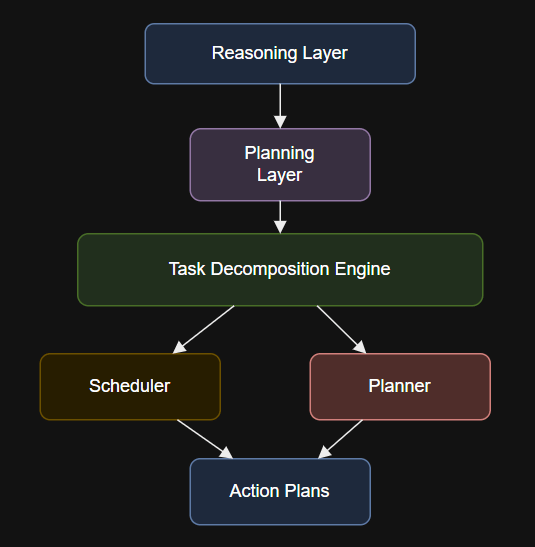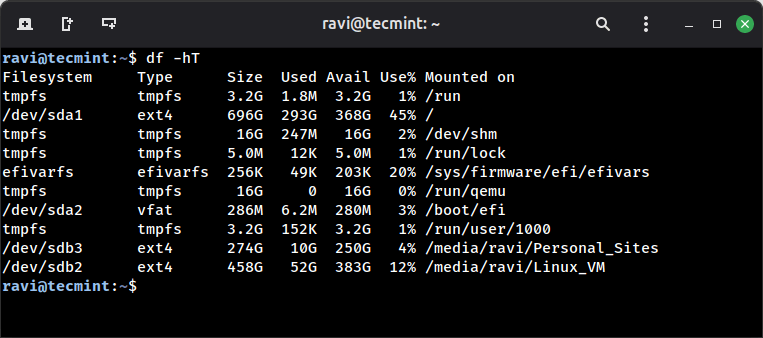Introduction
def notify_team(**kwargs):
print(“Notifying team…”)
What This Layer Is and Why It Matters
Explore workflow planning and orchestration for enterprise AI:
Apache Airflow Documentation
Diagram

Deep Dive: Components and Data Flow
- Goal Interpretation: Converts goals and objectives from the Reasoning Layer into specific, measurable outcomes.
- Task Decomposition: Breaks complex objectives into manageable sub-tasks, considering dependencies and constraints.
- Scheduling and Coordination: Assigns priorities, allocates resources, and arranges tasks in optimal order for parallel or sequential execution.
- Dynamic Adaptation: Continuously updates plans in response to feedback, failures, or changing environmental conditions.
Integration Points
t1 >> t2 >> t3
Production-Ready Script Example (Python, Workflow Planning with Apache Airflow)
This workflow decomposes an enterprise process into a sequence of tasks, schedules their execution, and adapts to failures with built-in retry and notification mechanisms.
The Planning Layer stands at the crossroads of intelligence and execution within agentic AI architectures. This layer takes outputs from the Reasoning Layer and translates them into actionable strategies, step-by-step plans, and multi-stage workflows. In essence, the Planning Layer is responsible for determining not just what should be done, but how and in what sequence. For enterprise AI systems, this layer is critical for automating complex business processes, coordinating cross-system activities, and enabling agents to operate autonomously in dynamic environments. A robust Planning Layer enables agentic AI to bridge the gap between abstract reasoning and concrete action, making enterprise automation both intelligent and adaptive.default_args = {
“owner”: “enterprise_agent”,
“depends_on_past”: False,
“start_date”: datetime(2025, 8, 5),
“retries”: 1,
“retry_delay”: timedelta(minutes=5),
}Below is a real-world Python example using Apache Airflow for defining and executing multi-step enterprise workflows.
Prerequisites: Python 3.9 or newer, Airflow installed and configured.The Planning Layer serves as the AI system’s strategic mind. It breaks down high-level objectives into detailed plans, orchestrates resources, manages dependencies, and adapts to changing circumstances in real time. This layer is where decision trees, scheduling algorithms, constraint solvers, and multi-agent planning frameworks operate. In enterprise scenarios, the Planning Layer is essential for automating business workflows, supply chain logistics, IT incident response, and any task requiring multi-step orchestration. When well designed, the Planning Layer enables scalability, efficiency, and resilience by allowing AI agents to anticipate, adapt, and self-correct during execution. Without it, even the most intelligent reasoning remains inert, unable to drive real-world impact.from airflow import DAG
from airflow.operators.python_operator import PythonOperator
from datetime import datetime, timedeltadef generate_report(**kwargs):
print("Generating report...")
with DAG(
dag_id=”enterprise_planning_layer_example”,
default_args=default_args,
schedule_interval=”@daily”,
catchup=False,
) as dag:
t1 = PythonOperator(task_id=”analyze_data”, python_callable=analyze_data)
t2 = PythonOperator(task_id=”generate_report”, python_callable=generate_report)
t3 = PythonOperator(task_id=”notify_team”, python_callable=notify_team)
External Reference
The Planning Layer provides agentic AI with the structure and foresight to move from isolated decisions to coordinated enterprise action. By breaking complex objectives into actionable tasks, sequencing activities, and adapting in real time, this layer unlocks true autonomous operation. In the enterprise, a robust Planning Layer is essential for delivering on the promise of scalable, resilient, and intelligent automation across diverse and dynamic business environments.
Conclusion
Enterprise-grade planning tools include Airflow for workflow orchestration, Ray and Dask for distributed task planning, OptaPlanner for constraint-based scheduling, and ROSPlan or pyhop for AI planning. Use cases span from automated incident response and resource allocation to supply chain optimization and robotic process automation.





